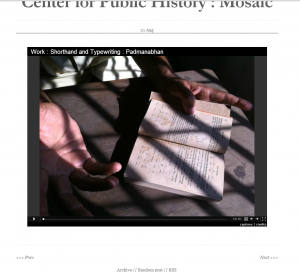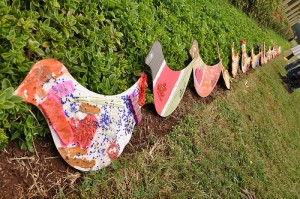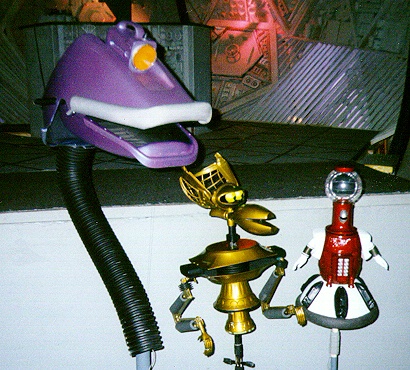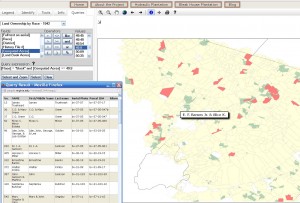I have been interested in connecting an individual, personal story to a public sense of histories of places, events, timelines. That is, I think there is a potential paradigm for threading stories, histories, archives and communities.
There is nothing new about this thought. Fields like oral histories/public history have well established research around these themes. But I want to put this proposal out there as a part-talk, part-make, part-teach session. I have very, very tiny seeds of the project that I can share, and it will be good to brainstorm around it, or see if there are folks interested in collaborating, too.
I am very much an outsider to digital humanities but I am hoping to learn and share (I am a research engineer who works with x-ray optics, and a journalist/amateur oral historian). I had been collecting oral histories at a physics research lab for half of 2009. Felt like it told a rich layered history of state-individual collaborations in science. That, then, broadened to interest in the intersection of scientific research and people’s histories….which then broadened to oral histories in other fields of work. The seeds I can talk about or illustrate are histories from two physicists who discuss the origin of a set of champagne bottles in a particle accelerator control room, and some other stories on dying traditions (woodwork for making musical instruments in India, shorthand and typing instruction schools). That is to say, each story is an independent experiment and is not connected to the other at all. But each offers a seed or point of departure.
All this finally led to some more plotting on oral history concepts. Here’s the premise (naivety and ignorance on my part will also become evident!):
— Each storyteller has many different stories.
— Each story has many different storytellers.
— Each story has many different theme and vice-versa, and so on…
— There must be a way to connect a personal history with public events and places.
— Each personal history can be connected to another using some categories/keywords/whatever-else: person, place (geography), timeline (when, year), event (is the story referring to an event like say, the SF earthquake of 1989 that someone else may also talk about in a seemingly unconnected way?).
— A story may have weak or strong associations to a set of attributes. This association can be weighted.
— There is an incredible range of stories recorded in university archives and other stand-alone oral history projects. The point is not to re-store them in a new space on the web. But there must be a way to re-point to them in a new scheme. That is, make the connections explicit.
— There is an incredible range of stories among all of us that feel like they are so irrelevant and unimportant to a wider audience. Can we make them relevant?
— Have multiple ways to add stories: upload, relink to existing, give contact for a volunteer to reach out, call in (toll free number), visit a recording center.
— Map out origin of each story. A map with dots shows where a particular thread has received stories from, providing an incentive to fill geographical gaps.
— Each story gets multiple keywords attached to it, reflecting the themes that the story touches on, besides the main subject matter thread.
— Cross links: The keywords are a point of entry into the many storytellers-many stories paradigm.
What’s the point?
Let’s say something like this exists. Call it DH-Mosaic. Let’s say there’s a sociologist out there who is researching the history of wine making in the San Francisco Bay Area from 1850 to 2000. She has access to the usual set of archives at universities, and the state/national archives. She has access to archives of newspapers, books, papers, and such. And she does field work that gets her access to families in the industry. And she has access to DH-Mosaic, and she logs on and searches this clearinghouse/repository. Meanwhile, a few years ago, someone who was researching the history of high energy physics in the San Francisco bay area put out a book, and he had raw unused data. One of those pieces was an interview of a technician at a high energy physics lab in the region who mentioned that his family used to be in the wine making industry in the early 1980s and he left it in search of better opportunities. The high energy physics research didn’t have the space for this story. But the raw data is on (or linked on) DH-Mosaic, logged with metadata that points to: high energy physics, 1980, wine history, <name>, janitorial, magnets research, San Francisco bay area, Menlo Park. Our wine history researcher comes across this, and gets in touch with the author/owner of the story. In the course of talking to a new source, she finds out more first-hand sources about say, a labor struggle in the wine making industry in the 1980s, which takes her research in a slightly different direction….Similarly a reporter investigating the domino effect of the Vietnam War protests in 1970 in California may find a story and follow up with <name> after listening to his story of clearing up broken glass following the 1970 Stanford student protesters.
What are some questions?
— How to make these links?!
— If you have a story, how do you define its relevance to a place/event/timeline/person/theme?
— Who defines the relevance?
— Within a specific story, how do you weight different aspects discussed?
— Who defines this relevance?
— How can this be done easily for a user interface?
— Is it possible to get users and researchers to shape the categorization?
— How do we get raw unused data (before it becomes a produced story/research paper) that just piles up for every researcher/reporter become a relevant trail of history?
— There is the larger issue of copyright, censorship, spam and what-not. But I am not even going there yet :)!
Why?
Loved this little quote from Michael Ondaatje’s book, Divisadero: “For we live with those retrievals from childhood that coalesce and echo throughout our lives, the way shattered pieces of glass in a kaleidoscope reappear in new forms and are song-like in their refrains and rhymes, making up a single monologue. We live permanently in the recurrence of our own stories, whatever story we tell. ”









